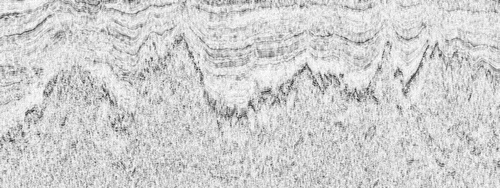Everyone involved with a science journal like New Zealand Journal of Geology and Geophysics (NZJGG) deals with signals and noise. Authors, referees, editors, copy-editors and readers all want to obtain a clear message from what's in front of them, be it data, text or graphics (). I'd like to comment on a couple of aspects of signals and noise from a journal Editor's point of view.
Before they even think about publication, scientists analyse data for pattern, correlation and causation. I have noticed that many manuscripts could improve their signal-to-noise ratio by better explaining context and by considering alternative explanations. Omitting these aspects communicates a lack of confidence, an overdose of arrogance and/or confirmation bias. Any way you look at it, it's not good science. On occasion I have even come across manuscripts in which the fundamental words ‘hypothesis’, ‘test’, ‘confirm’, ‘refute’ and ‘modify’ do not appear. If we want our papers to be of most use to our colleagues we should explain how our research relates to earlier work, think about other options, admit deficiencies and indicate how models might be tested in the future.
A related aspect of signals and noise is in how manuscripts and papers are composed and presented. Written and visual communication, including science publishing, is an essential part of the scientific process. Attention to the basics is important: does colour and symbology match across figures? Are all figures relevant and uncluttered? With the use of online supplementary material authors can, more than ever, emphasise their main interpretive message in the main paper without it being diluted by large quantities of raw data. All of these things add up to a solid, nuanced publication with increased clarity, appeal and citability. Manuscripts that have had pre-submission reviews are invariably more polished than those that have not.
I'll finish this Editorial by thanking my NZJGG colleagues whose job it is to maintain and improve the signal-to-noise ratio for the Journal. These are Associate Editors Pilar Villamor and Richard Jongens who have both recently completed their terms, Kari Bassett, Kathy Campbell, Andrew Gorman, Shane Cronin and Brent Alloway who continue, and Tim Little who has recently joined as an Associate Editor. The publishing team at the Royal Society of New Zealand, Jill Mellanby, Marie Hodgkinson and Niamh McNamara, continue to provide excellent support, as do the Taylor & Francis staff overseas.

